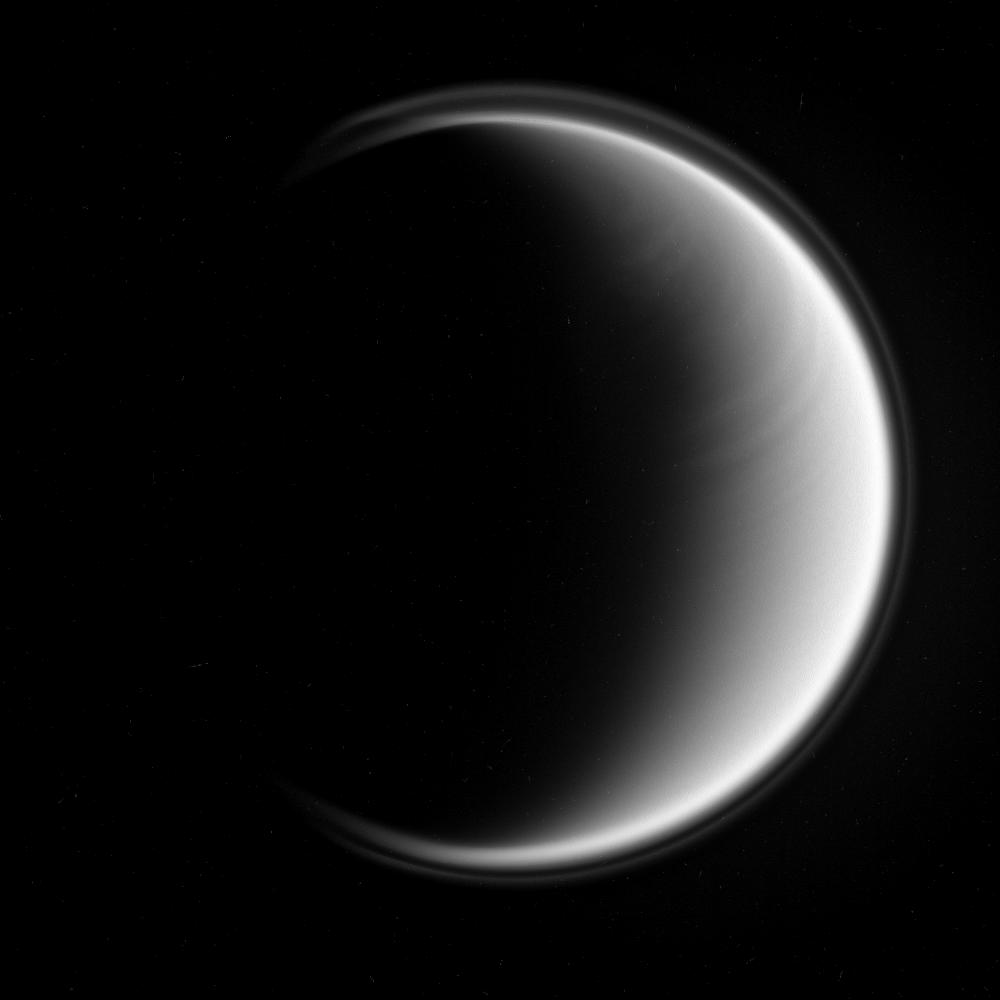Bands of Titan

| PIA Number | PIA08868 |
|---|---|
| Language |
|
Titan bears a distinct east-west banded pattern in this Cassini spacecraft image taken in the ultraviolet.
The ultraviolet wavelength allows Cassini to see Titan's stratosphere, where superrotation -- in which the atmosphere moves around the moon faster than Titan rotates -- is strong. The recent appearance of this feature may be a harbinger of seasonal change on Titan.
The moon's halo -- its detached, high-altitude global haze layer -- is visible here as well, and is often its most prominent feature in such ultraviolet views.
North on Titan (5,150 kilometers, 3,200 miles across) is up and rotated 6 degrees to the right in this image.
The view was obtained by the Cassini spacecraft narrow-angle camera using a spectral filter sensitive to wavelengths of polarized ultraviolet light. The view was acquired on Dec. 25, 2006 at a distance of approximately 1.3 million kilometers (800,000 miles) from Titan and at a Sun-Titan-spacecraft, or phase, angle of 123 degrees. Image scale is 8 kilometers (5 miles) per pixel.
The Cassini-Huygens mission is a cooperative project of NASA, the European Space Agency and the Italian Space Agency. The Jet Propulsion Laboratory, a division of the California Institute of Technology in Pasadena, manages the mission for NASA's Science Mission Directorate, Washington, D.C. The Cassini orbiter and its two onboard cameras were designed, developed and assembled at JPL. The imaging operations center is based at the Space Science Institute in Boulder, Colo.
For more information about the Cassini-Huygens mission visit http://saturn.jpl.nasa.gov . The Cassini imaging team homepage is at http://ciclops.org .
Credit: NASA/JPL/Space Science Institute
